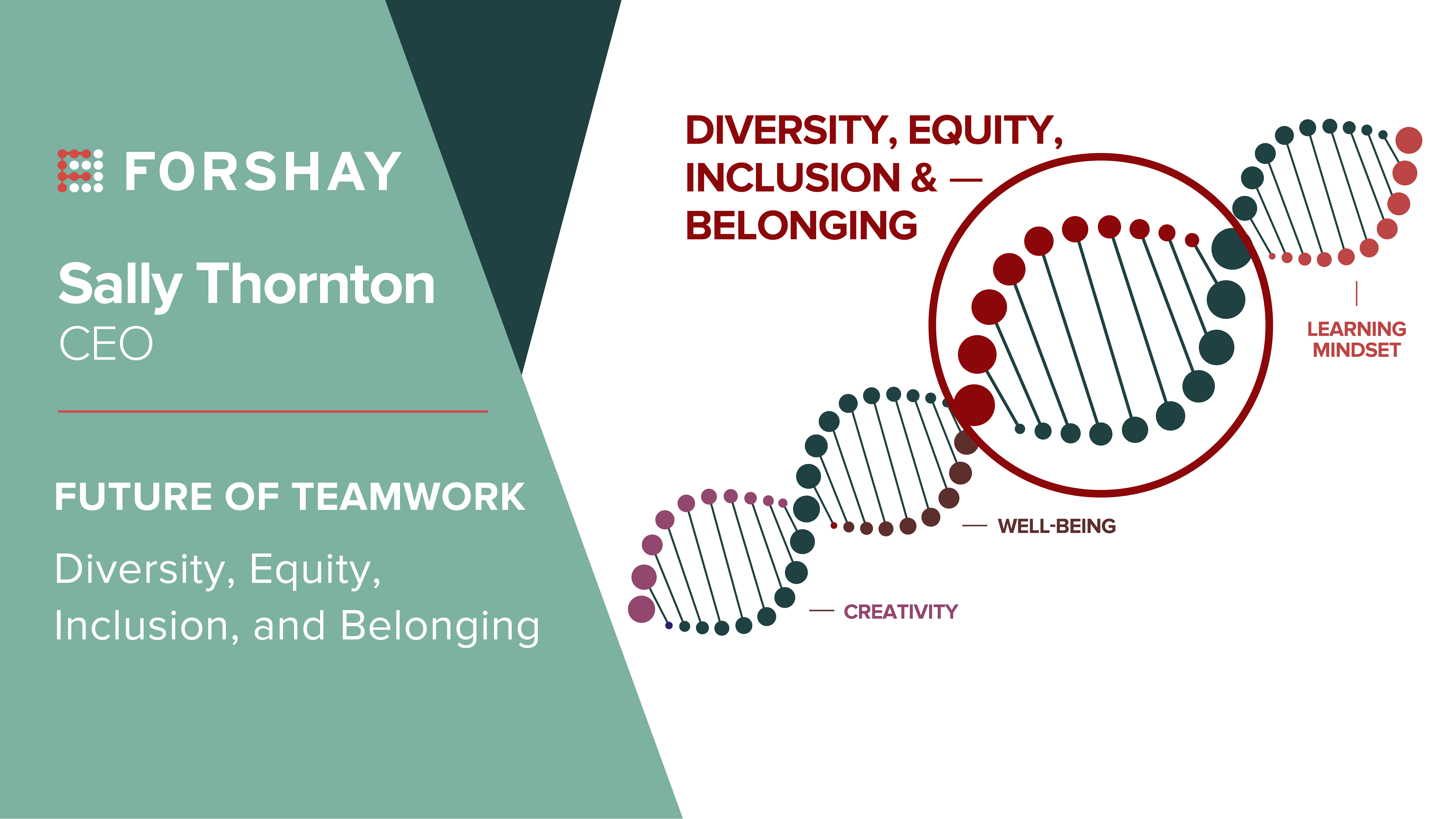
A couple of years ago the term “special snowflake” was making the rounds on the interwebs as a bit of a swipe at the millennial workforce. The idea was they needed to get over themselves and stop being so self-aware.
What a difference a pandemic can make. Fast forward to quiet quitting and out-loud leaving as people of all generations continue to resign, even in the face of economic uncertainty.
The most recent data on teams and employee happiness gives us a clue to one reason: telling people to conform and cover (and, let’s face it, commute) is detrimental to employee and team performance, not to mention retention rates.
It turns out we are *all*, in fact, special snowflakes. As humans we crave to be seen and acceptance of our uniqueness.
So this month we are talking about diversity, equity, inclusion and a critical dimension that is essential for team performance – belonging.
Think about the last time you were at an event that opened with an ice-breaking activity. Everyone shares, steps into some level of vulnerability, laughs and (ideally) feels seen. Icebreakers are like speed-dating DEI&B. We feel included and learning more about each other, and by contributing to the conversation, we feel (ideally) some level of belonging.
In some ways, DEI initiatives are like a massive ice-breaking program to drive a sense of inclusion among people. Yet if organizations stop with simply drawing awareness to DEI, without considering the action of belonging, the opportunity to really drive the contribution element that belonging gives and gets means missing out on the highest lever for team performance.
Focus on what matters most
In the past couple of months, we’ve talked about the importance of creativity and wellbeing in the Future of Teamwork. This month we add another essential element to the strand – DEI&B.
You are familiar with DEI of course. The &B – for belonging – is emerging as the essential nuance that makes DEI really click. We’ve all had the experience of being included in a group yet not feeling like we belonged there. Kind of makes your snowflake freeze up a bit, doesn’t it?
Inclusion without the belonging can lead to going through the motions vs. really showing up. In fact, lack of belonging is one of the triggers for quiet quitting.
A sense of belonging is key for high-functioning teams and diversity retention improvement. Why? Because team performance thrives when each member contributes the best of their unique expertise or perspective.
Belonging drives better contributions which drives better results. And by the way, if GenZ figures into your future success, belonging is key.
The great cover up
What is behind belonging? The concept of “covering” gives us a clue. Covering is what humans do to fit in. Sociologist Erving Goffman describes covering as when someone consciously hides a significant part of their identity to avoid looking like an outsider. How can belonging flourish (which is all about contributing), when we’re also hiding?
Anyone who has ever been a teenager knows about covering, and it turns out that we don’t necessarily outgrow covering as adults. Much depends on our environment.
Authors Kenji Yoshino and Dr. Christie Smith wrote this research project from Deloitte on how to see it and overcome it in business. In this month’s video from Running Remote, our CEO Sally Thornton shares some (hopefully helpful) visuals illustrating the “covering” research, as well as some other recent studies about DEI&B influence on business outcomes.
Here are a few key takeaways:
- Even 45% of straight white men are covering. Inclusion usually focuses on underrepresented groups, and rightly so. Yet it turns out that even non-minorities cover aspects of themselves, part of a corporate culture hangover from the heyday of the “ideal worker” Don Draper.
- Better team dynamics – When employees don’t spend energy covering up, it releases a higher level of collaborative energy that can drive more innovative solutions.
- Organizational norms and values drive covering for better or worse – which one is true for your company? Companies may need a fresh set of eyes to uncover some embedded triggers that cause employees to close off parts of their identity (and we have some strong consultants who tackle this – let us know if you’d like their support).
“B” is also for business outcomes.
The business angle is clear. Belonging is about contribution, and covering dumbs down results; raising belonging means getting the highest contribution out of each team member and raises collective team intelligence. Amy Edmondson’s work on psychological safety also shows that when employees feel safe in a team setting, outcomes improve exponentially. Each of these issues is intertwined, hence our DNA strand visual to help us “see” the complexity and understand the inter-relation.
How are you enabling the best of each snowflake to contribute to your company’s performance? It’s a win/win/win to focus on this together!
Be sure to check out our CEO Sally Thornton’s short video from Running Remote covering some visuals from the studies we mention in this month’s post.







